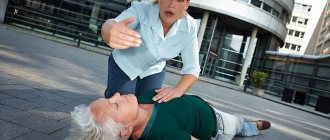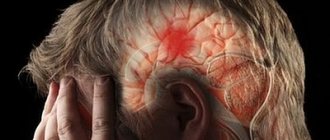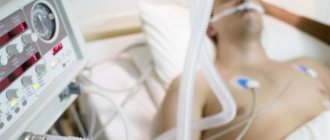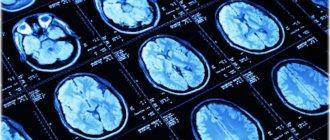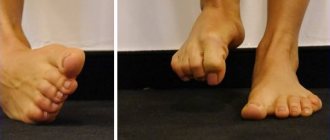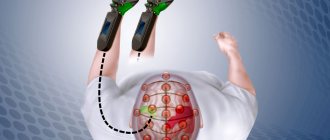Ischemic stroke
Treatment of the consequences of ischemic stroke can be divided into several areas:
- Restoration of movement (sessions with a physical therapist, aquatherapy, exercises on simulators, use of modern techniques: Bobath therapy, Exarta, PNF method);
- Returning independence in everyday life (sessions with an ergotherapist in a specially equipped training apartment);
- Restoration of speech and swallowing;
- Drawing up a menu with the recommendations of the attending physician;
- Blood pressure control and drug therapy;
- Hygiene procedures (including ostomy care and ostomy removal);
- Symptomatic treatment (prevention or treatment of bedsores, pain relief, etc.);
- Restoring control of the pelvic organs;
- Treatment of depression, help from a psychologist.
The rehabilitation program is carried out in three stages.
The first stage begins in the first days after an ischemic stroke. The possibilities for active rehabilitation are limited, since the patient is in bed and inactive. The patient is turned over, massaged, and breathing exercises are performed.
It is important to communicate with the patient, even if his own speech is impaired or he cannot respond. Speech perception affects the functioning of functional areas of the brain and has a positive effect on the emotional and physiological state of a person.
The second stage lasts up to several months after the stroke. It can take place either directly in a hospital or in a specialized rehabilitation center. During this period, massage, therapeutic exercises, and physiotherapy are prescribed. Specialists work on speech and cognitive functions (memory, thinking, imagination). This stage can last up to six months: it all depends on the severity of the stroke.
In the late, third, rehabilitation period, active methods are used to restore functions and skills. Fine motor skills and self-care skills are restored. It is also important to develop the patient’s commitment to rehabilitation measures and a positive attitude.
In some cases, one or two courses of rehabilitation are sufficient (the patient is discharged with detailed recommendations and a set of exercises to be performed at home).
deals with treatment after ischemic cerebral stroke. Each specialist conducts an individual examination of the patient and sets time-bound and achievable goals. Team members interact and exchange information to ensure that rehabilitation is effective.
How it manifests itself
Among the main signs: severe migraines, loss of consciousness or coma, vomiting accompanied by convulsions, and in case of serious disorders, weakened breathing and cardiac arrest. Later noted:
- loss of hearing, vision;
- deterioration of coordination and disorientation in space;
- loss of social skills - the ability to think, speak, read, write.
The manifestation of certain symptoms indicates which hemisphere has undergone the greatest changes - left or right. Only an experienced neurologist can carry out diagnostics and assess the extent of damage.
Symptoms
Swelling of the limbs or part of the body is easy to detect visually, which is impossible for internal organs. The onset of the disease must be diagnosed as early as possible, since cerebral edema has serious consequences. Signs of the disease:
- The person experiences difficulties with spatial orientation and coordination of movements;
- Complete or partial lack of control of the senses, possible blindness or significant reduction in vision;
- Unreasonable vomiting or attacks of nausea;
- Sharp paroxysmal pain in the head area.
Important! If a person exhibits at least one of the listed signs, it is necessary to take emergency measures: provide first aid, hospitalize the patient.
Who is at risk
There are people who need to be especially wary of developing a stroke, as they are at risk.
Among them:
- Persons with hypertension.
- Patients with diabetes.
- Men and women over 65 years of age.
- People with abdominal obesity.
- Persons with a hereditary predisposition to vascular pathologies.
- Patients who have previously had a stroke or heart attack.
- Patients with diagnosed atherosclerosis.
- Women over 35 years of age taking oral contraceptives.
- Smokers.
- People suffering from heart rhythm disturbances.
- People with high cholesterol levels.
Most often, patients with the listed diagnoses are registered at the dispensary. Special mention should be made of people living in a state of chronic stress. Emotional stress negatively affects all systems of the body and can cause a stroke.
Mechanism of occurrence
After a stroke, cerebral edema can develop according to one of the following possible patterns:
- The most dangerous option occurs with a hemorrhagic type of disease , caused by a hematoma in the structure of the medulla. Increased pressure in the presence of accumulation of blood clots in the subarachnoid space significantly increases the likelihood of mortality;
- Cellular stagnation or excessive release of cellular substance into the brain space as a result of an increase in osmotic pressure increases the volume of cerebrospinal fluid (cerebral fluid), which, in turn, leads to excessive pressure on the cranium and brain;
- During a stroke, the blood supply to nerve tissue cells is disrupted , which leads to stagnation in the brain blood flow system. During normal functioning of the organ, all toxins released into the intercellular structures are eliminated by the circulatory system when it is functioning properly. Combined with critical oxygen deprivation of the brain, impaired blood flow does not eliminate toxins in a timely manner. This stimulates the cells to secrete fluid, which causes cytotoxic damage.
Symptoms of swelling from hemorrhagic stroke
There are many risk factors on the basis of which one or another type of pathological condition develops.
Hemorrhagic stroke is often characterized by the release of internal fluid with characteristic hemorrhage and health complications, with pronounced symptoms:
- disturbance of speech functions and functioning of muscle tissue;
- decreased limb control and facial paralysis;
- temporary loss or weakening of vision and hearing, extraneous noise;
- manifestations of swelling of the limbs and fainting, memory loss.
With a hemorrhagic stroke, there is a rapid impact on the brain and its tissues, nerve cells. The consequences of such exposure may be irreversible, therefore, if these symptoms are recorded, it is necessary to seek help as quickly as possible, providing the person with professional care and rehabilitation.
Common Causes
The pathological condition occurs only due to the growth of intercellular substance and cerebrospinal fluid in the skull. Factors directly leading to the development of the disease are most often the following:
- increase in blood plasma pressure;
- transformation of the blood balance towards an alkaline composition reduces its fluidity;
- deficiency of nutrients and oxygen deficiency causes a decrease in the intensity of transport of substances;
- disorder in the main arteries and veins of normal circulation;
- Failure of energy metabolism in brain cells causes local inflammation and congestion in the affected areas, which forms an increase in cells due to a large volume of excess fluid.
Medical care in hospital
All patients receive intensive therapeutic care at an early stage in a neuro intensive care hospital. Initial treatment measures are aimed at:
- normalization of microcirculation, hemorheological disorders;
- relief of cerebral edema, treatment of obstructive hydrocephalus;
- correction of blood pressure, body temperature;
- functional regulation of the cardiovascular system;
- maintaining water and electrolyte balance;
- prevention of possible seizures;
- prevention of extracranial consequences of inflammatory and trophic nature (pneumonia, embolism, pulmonary edema, pyelonephritis, cachexia, DIC syndrome, endocarditis, bedsores, muscle atrophy, etc.);
- providing respiratory support (if the patient needs it);
- elimination of intracranial hypertension in HI with dislocation.
Principles of disease diagnosis
The gold standard for making a diagnosis is computed tomography (CT). In the early period after an attack (1-3 days), this method of neuroimaging is more informative than MRI. Fresh hemorrhagic material, including 98% hemoglobin, appears on CT as a high-density, well-defined, bright inclusion against the background of darker brain tissue. Based on a computed tomogram, the epicenter zone, volume and shape of the formation, the level of damage to the internal capsule, the degree of dislocation of brain structures, and the state of the cerebrospinal fluid system are determined.
With the onset of the subacute phase (after 3 days), the red cells of the hematoma along the periphery are destroyed, in the center the iron-containing protein is oxidized, and the focus becomes lower in density. Therefore, along with CT scan, MRI is mandatory within 3 days and later. In subacute and chronic forms, the MR signal, in contrast to CT, better visualizes a hematoma with derivatives of hemoglobin oxidation (methemoglobin), which passes into the isodense stage. Angiographic examination methods are used in patients with an unknown cause of hemorrhagic stroke. Angiography is primarily performed on young people with normal blood pressure readings.
For adequate management of patients after an attack of intracerebral hemorrhage, an ECG and X-ray of the respiratory organs are required, and tests for electrolytes, PTT and APTT are taken.
Clinical manifestations of HI
Shortly before the attack, pre-stroke clinical symptoms may precede the attack (not always), by which one can suspect impending danger:
- tingling, numbness of one facial half;
- numbness in fingers or toes;
- sudden weakness, dizziness, noise in the head;
- severe pain in the eyes, spots, double vision, vision in red;
- sudden staggering when walking;
- causeless tachycardia;
- attacks of hyperhidrosis;
- increased blood pressure;
- unreasonable occurrence of nausea;
- inhibition in communication and perception of other people's speech;
- flushing of the face, hyperthermia.
A cerebral stroke with hemorrhage is still characterized by an immediate acute onset without warning signs, which occurs during or almost immediately after vigorous activity, a stressful situation, or excitement. A hemorrhagic stroke is indicated by classic symptoms that develop suddenly, are pronounced and rapidly progress:
- sharp and severe headache;
- uncontrollable vomiting;
- prolonged depression of consciousness, coma;
- blood pressure above 220 mmHg.
Common signs of shock are also noisy breathing, epileptic seizures, lack of pupillary response to light, and spastic miosis. Depending on the location of the lesion, there may be a rotation of the head and rotation of the eyeballs in the direction of the affected hemisphere or contralaterally. Having discovered signs of GI in a victim, a person nearby must immediately call an ambulance!
Acutely developed hemorrhage leads to the fact that blood flows freely into certain structures of the brain, saturating them and forming a cavity with a hematoma. The bleeding continues for several minutes or hours until a blood clot forms. Over a short period of time, the hematoma quickly increases, exerting a mechanical effect on the affected areas. It stretches, presses and displaces the nervous tissue, causing its swelling and death, which leads to an intensive increase in neurological deficit (respiratory depression, loss of sensitivity of one half of the body, speech disorders, loss of vision, paresis of the swallowing muscles, etc.).
The size of the blood accumulation can be small (up to 30 ml), medium (from 30 to 60 ml) and large (more than 60 ml). The volumes of spilled liquid can reach critical levels, up to 100 ml. Clinical observations show that with intracranial hemorrhages exceeding 60 ml, the pathology ends in death in 85% of patients within 30 days.

